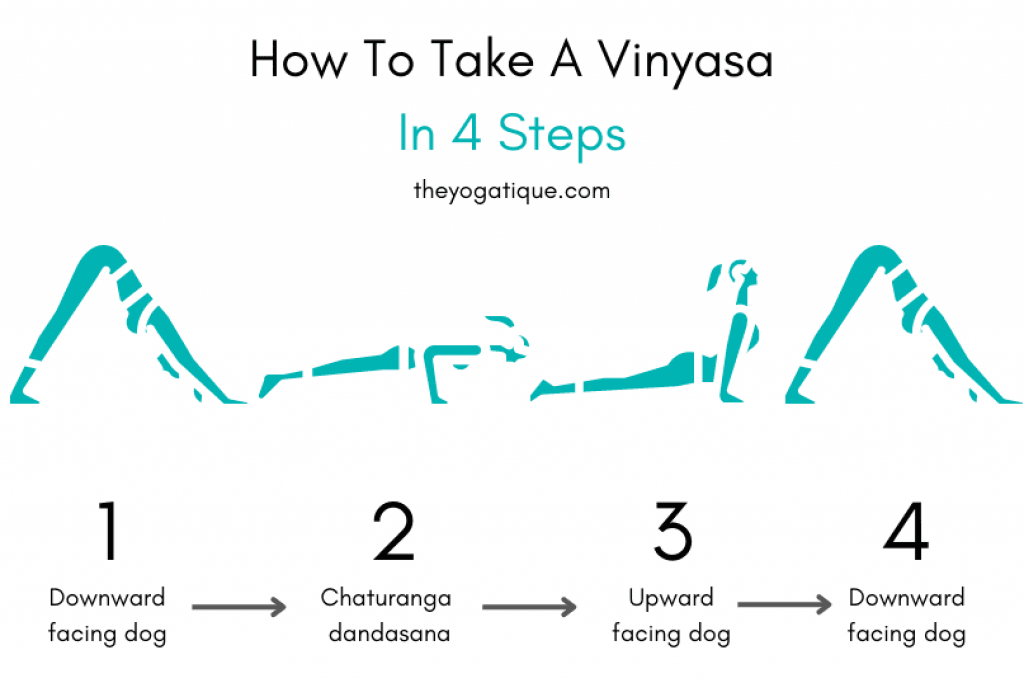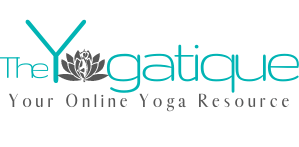You’re in your first yoga class, and everything is going well; you’re following your teacher’s guidance and watching her demos. But then she gets off her mat to walk around the room, telling you to “take a vinyasa.” But you’re thinking to yourself, but what is a vinyasa? Sound familiar?
You freeze in confusion but don’t want to ask the teacher what she means as you see the other students moving effortlessly and in sync. So you look around, feeling a bit confused and silly, trying to figure out what the heck is going on.
If so, don’t worry; this is a common scenario for many yogis when first starting out, myself included. Still, you most likely left that session wondering, “what does it mean to take vinyasa?” So let’s uncover this strange yoga lingo, so you know what to do next time.
Article content:
(Click any link below to jump directly to section)

SEARCHING FOR THE BEST
ONLINE YOGA MEMBERSHIP TO JOIN?
Online Yoga Subscriptions Offer
- 1,000's of classes
- Best instructors
- Affordability
- Flexibility
⬇Click below for the best online yoga memberships ⬇
What does take a vinyasa mean yoga?
To take a vinyasa in yoga means to do four poses in a set sequential order. It is part of an extended sequence known as the Sun Salutation, which originates from Ashtanga Vinyasa yoga and is a part of the Eight Limbs of Yoga.
You take a Vinyasa by performing these yoga poses in order:
- Downward Facing Dog
- Chatarunga Dandasana
- Upward Facing Dog
- Downward Facing Dog
Why do we take a vinyasa in a yoga class?
To “take a vinyasa” is a common short cue used in dynamic yoga classes.
In a vinyasa flow class, the intention is continuous movement, as it is a dynamic, flowing style where you move with your breath. In Ashtanga yoga, it is recommended to take regular vinyasas to keep the muscles warm.
When cueing to take a vinyasa, every good yoga teacher should give the option to skip it. This is especially important for beginners and people with injuries or health issues. This is because vinyasa practice involves multiple vinyasas, so it can be too physically demanding for some people.
Instead of taking a vinyasa, you can stay in the downward dog or drop to your knees for a child’s pose, or take a variation or modification. The latter is beneficial if you feel tired as it takes the weight off your upper body and wrists.
Vinyasa meaning in Sanskrit
In Sanskrit, vinyasa means “to place in a special way.” This refers to the arrangement of the yoga postures and how the sequence links movements to the breath.
The 4 steps to taking a vinyasa
Taking a vinyasa involves three yoga postures, but there are four steps to taking a vinyasa as you start and end in the same position.
When a vinyasa teacher cues this, you’ll likely be in Downward Facing Dog. Yoga teachers tell you to “take a vinyasa” between sequences of standing poses in a vinyasa class. In an Ashtanga class, you also take them between seated flows.
You take a vinyasa by flowing one breath to movement, performing the following yoga postures in sequential order:
1. Downward Facing Dog
You start in the Downward dog position with the legs, arms, and spine straight and hips lifted. Your chest should be pressing towards the thighs, and your head relaxed.
2. Chaturanga Dandasana
From Downward Dog, lift your heels and roll your body forward with a rounded spine (think moving towards plank). Once your shoulders are above your wrists, lower the hips in line with your body in a plank pose. Next, bend your elbows, hugging them into your ribcage as you lower halfway to the ground until your shoulders are in line with your ears and the elbows are at about a 90-degree angle – no lower! An easy way to envision this movement is moving from high to low pushups. Note that Chaturanga is an advanced posture and one that is difficult for many people. A gentler alternative is to drop the knees to the floor into a half plank, then lower the upper body.
3. Upward Facing Dog
Keep your body off the ground, elbows at 90 degrees. On an inhale, roll over the tops of your feet, drop your hips, and straighten your arms. Press your chest forward and draw your shoulders down and away from your ears.
4. Downward Facing Dog
On the next exhale, tuck your toes as you lift your hips up and back to return to your starting position.

What is a Vinyasa yoga class like?
Vinyasa classes are dynamic classes that help you build strength, stamina, flexibility, and balance.
It is widely thought that vinyasa is one of the harder forms of yoga because vinyasa flows are a breath-to-movement style yoga class that often includes flowing from one advanced yoga posture to the next. But don't let that put you off!
The continuous flow also increases prana (life force) and creates heat within, increasing your energy levels.
By moving as you breathe, you become more aware of your body and connected to your breathing, which leads to many benefits, such as stress reduction and improved focus.
While these classes will include a lot of yoga poses, they might also include some Pranayama to start or end the class.
Is Vinyasa hard?
Vinyasa can be quite hard, I won’t lie! If you are familiar with Baptiste yoga, then you know exactly what I’m talking about!
It can be very physically demanding and challenging but also playful and fun! Vinyasa flow classes follow the vinyasa krama sequencing method, where each posture builds onto the next. A class like this is likely building up to a peak pose, which could be an intermediate pose like Dancer, or an inversion like a handstand or wheel, depending on the level of the class.
Vinyasa vs Hatha
In Hatha yoga, you hold every standing posture for around five breaths. In Vinyasa yoga, you continue moving in flow yoga.
Takeaway
Now that you know what taking a vinyasa means and how to do it, you’ll feel much more confident in your next yoga class, whether online or in-person. In addition, the more familiar you become with the sequences, the better your breath awareness will be, the most essential aspect of any yoga practice!
However, don’t worry if you initially struggle with finding the rhythm of your breath. It takes time, but the more you practice, the easier it will become and the more magical benefits you will receive.
FAQ about vinyasa
What is the difference between vinyasa yoga and regular yoga?
Hatha yoga is practiced at a slower pace and may incorporate longer holds of poses. Vinyasa yoga focuses on connecting the breath to your movements while flowing from posture to posture
Is vinyasa hard for beginners?
Vinyasa yoga doesn't necessarily need to be super intense, if you are modifying the poses to suit your level. However, vinyasa being a flow-based class can be fairly aerobic, even if you practice the less advanced expressions of the postures!
Some online yoga studios, online yoga teacher training programs, and brands that we write about may offer us a small commission should you decide to make a purchase or signup after reading our content. Thank you for enabling us to exist!








